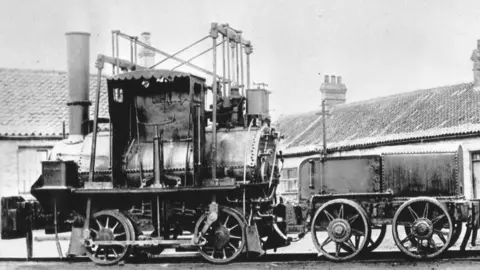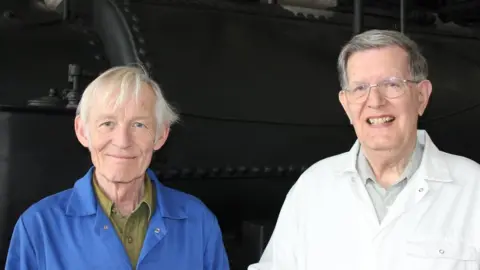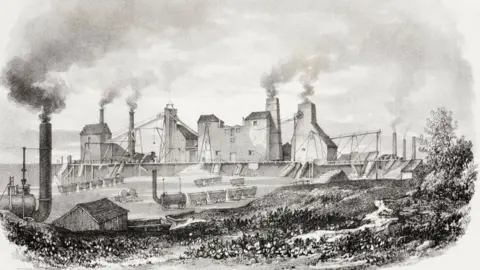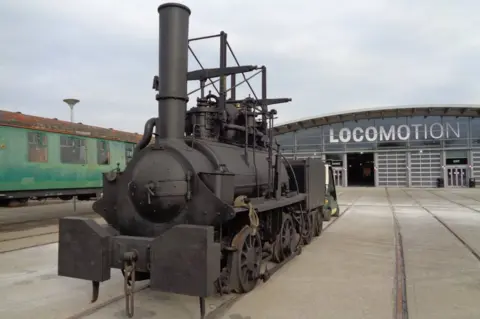George Stephenson's links to Hetton rail engine proved false
 John Cook
John CookOne of the "longest standing early railway mysteries" has been solved with the pedigree of a locomotive proven to be false, researchers have claimed.
The Lyon engine was said to be designed by George Stephenson and pre-dated his 1825 Locomotion No 1 and 1829 Rocket.
But researchers at Locomotion National Railway Museum in Shildon, County Durham, said they can "conclusively" prove that to be false.
The "tall tale" had ensured the engine survived though, the researchers said.
 Ian Richardson
Ian RichardsonThe locomotive, which hauled coal at Hetton Colliery near Durham for 60 years, was actually built around 1849, an expert team concluded.
A museum spokesman said the mystery began in 1902 when "exaggerated claims" by the colliery's owners led to an "extraordinary national interest".
As a result of the claim, the Lyon, one of three sister engines, was withdrawn from service and went on to lead the 1925 procession for the Stockton and Darlington Railway centenary celebration.
 Ian Richardson
Ian RichardsonDr Michael Bailey and Peter Davidson spent seven months conducting a "forensic-like examination" of the locomotive and archives to prove its provenance.
Dr Bailey said: "I am pleased that as a result of this project we have been able to solve the Hetton mystery and confirm the locomotive's true identify.
 National Railway Museum
National Railway Museum"Although it would have been exciting to uncover links to early Stephenson engines, the benefit to us today is that this remarkable locomotive would undoubtedly have been scrapped were it not for the tall tales surrounding it."
One of the key breakthroughs came when the team discovered the technology needed to make long sheets of wrought iron plate used in Lyon's boiler did not exist before the 1840s, ruling out an earlier construction date.
Dr Sarah Price, head of Locomotion, said there are several other engines she would like Dr Bailey and Mr Davidson to look at.
 Anthony Coulls
Anthony Coulls
Follow BBC North East & Cumbria on Twitter, Facebook and Instagram. Send your story ideas to [email protected].
